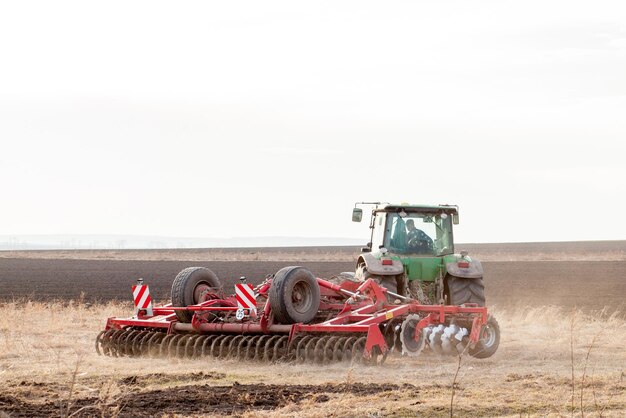A disc harrow is an essential tool for breaking up soil clumps, incorporating crop residue, and creating a smooth seedbed. Proper use of a disc harrow ensures consistent field preparation, leading to better seed germination and improved crop yields. Here’s a step-by-step guide on how to use a disc harrow effectively.
1. Choose the Right Disc Harrow
Disc harrows come in different types, including:
- Light-duty disc harrows: Suitable for small farms and light soil preparation.
- Heavy-duty disc harrows: Ideal for breaking compacted soil and incorporating crop residue.
- Offset disc harrows: Provide deeper penetration and are excellent for primary tillage.
Selecting the right type depends on your soil condition, field size, and the level of tillage required.
2. Prepare Your Tractor and Equipment
Before heading to the field, ensure your tractor is properly equipped to handle the harrow. Check for:
- Adequate horsepower to pull the harrow efficiently.
- Proper hitch alignment to ensure even soil penetration.
- Lubrication of moving parts for smooth operation.
3. Set the Harrow Depth and Angle
Adjust the disc harrow to the appropriate working depth based on your soil and crop needs:
- Shallow depth (2-4 inches): Ideal for seedbed preparation and light weed control.
- Medium depth (4-6 inches): Suitable for mixing organic matter into the soil.
- Deep tillage (6-8 inches): Effective for breaking compacted layers in heavy soil.
The gang angle (the angle of the discs) determines how aggressively the soil is turned. A steeper angle provides deeper cutting and mixing, while a shallower angle offers lighter tillage.
4. Follow the Right Harrowing Pattern
To achieve consistent field preparation, use a strategic harrowing pattern:
- First pass: Move in one direction across the field.
- Second pass: Harrow at a perpendicular angle to the first pass for even soil distribution.
- Final smoothing: If necessary, make a final pass in the planting direction for a uniform seedbed.
5. Maintain Proper Speed and Overlap
Operating at a steady speed (4-6 mph) ensures even soil disturbance without excessive clumping. Slightly overlapping each pass prevents gaps and ensures complete coverage.
6. Monitor Soil Conditions
Avoid harrowing wet soil, as it can lead to compaction and clumping. Dry, slightly moist soil provides the best conditions for effective tillage.
7. Conduct Regular Maintenance
To keep your disc harrow in top condition:
- Check for worn-out discs and replace them when needed.
- Tighten loose bolts and lubricate bearings regularly.
- Clean off soil and debris after each use to prevent rust and buildup.
Using a disc harrow correctly ensures consistent field preparation, leading to healthier crops and better yields. By selecting the right harrow, adjusting depth and angle, and following an effective harrowing pattern, you can maximize efficiency and soil quality on your farm.
Join 'Farmers Mag' WhatsApp Channel
Get the latest Farming news and tips delivered straight to your WhatsApp
CLICK HERE TO JOIN






